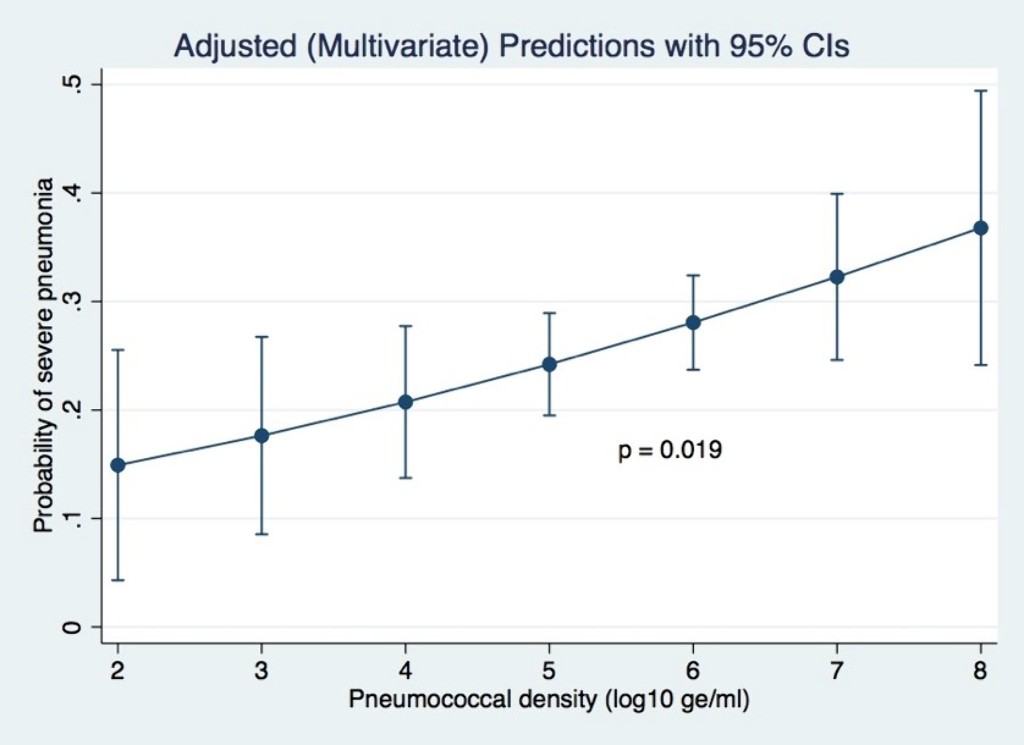NASOPHARYNGEAL PNEUMOCOCCAL DENSITY IS ASSOCIATED WITH SEVERE PNEUMONIA IN YOUNG CHILDREN IN LAO PDR (ID 856)
- Fiona M. Russell, Australia
- Olivia J. Carr, Australia
- Keoudomphone Vilivong, Laos
- Mimee Laddaphone, Laos
- Eileen M. Dunne, United States of America
- Jana Y. Lai, Australia
- Jocelyn Chan,
- Malisa Vongsakid, Laos
- Chanthaphone Siladeth, Laos
- Belinda D. Ortika, Australia
- Mayfong Mayxay, United Kingdom
- Paul N. Newton, United Kingdom
- Lien Anh Ha H. Do, Australia
- Kim E. Mulholland, Australia
- Audrey Dubot-Pérès, Laos
- Catherine Satzke, Australia
- David A. Dance, Laos
- Fiona M. Russell, Australia
Abstract
Background
Pneumococcal nasopharyngeal colonisation density >6.9 log10 copies/mL is associated with primary endpoint pneumonia, very severe pneumonia and hypoxic pneumonia. Few studies have explored the association between pneumococcal density and severe pneumonia. We determined the association between nasopharyngeal pneumococcal density and children with severe pneumonia in Laos.
Methods
A prospective observational study was conducted at Mahosot Hospital. Children <5 years of age admitted with ARI were recruited (2014 to mid-2018). Clinical and demographic data were collected alongside with nasopharyngeal swabs. Severe pneumonia was classified according to the WHO 2013 definition. Pneumococci were detected and quantified by lytA qPCR. A logistic regression model deterimined the association between pneumococcal density and severe pneumonia, after adjusting for potential confounders.
Results

Of 1,289 participants enrolled, 32.2% had severe pneumonia. After adjusting for potential confounders (age, ethnicity, residential location, living with children <5 years, exposure to cigarette smoke, monthly income, PCV13 vaccination status and co-detection of RSV), pneumococcal density was positively associated with severe pneumonia (adjusted odds ratio 1.4; 95% CI 1.1–1.8; p=0.019).
Conclusions
Pneumococcal carriage density is associated with the probability of severe pneumonia in children in this setting.